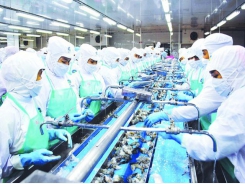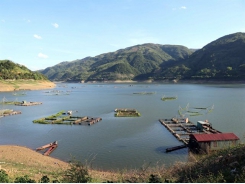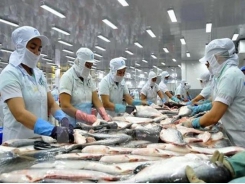High hopes for aquaponics system inspired by sewage treatment

A novel water purification system inspired sewage plants has been shown to be effective at optimising fish waste for use as fertiliser for plants in aquaponics facilities.
The aquaponics facility where the trial took place. Photo: Victor Lobanov
In a recent study, researchers demonstrated that the system could improve nutrient remineralisation for the plants, while removing excess nitrogen and carbon from the system, creating a healthier environment for fish.
The study, published in Frontiers in Plant Science, was undertaken by researchers from the Department of Marine Sciences at the University of Gothenburg and involved the production of rainbow trout and lettuce.
As lead author, Victor Lobanov explained to Frontiers Science News: “Fish sludge is a waste product made up of uneaten food and fish faeces and is normally broken down by bacteria in the water. In addition to physically harming fish gills, excess carbon in the solids leads to excessive bacterial growth – diminishing oxygen in the water and hampering the ability of the fish to breathe. We wanted to find out whether this waste could be used to fertilise plants in aquaponics systems by removing the excessive carbon, yet preserving the minerals needed for growing crops.”
The researchers investigated a potential solution inspired by sewage and wastewater treatment plants found around the world, called enhanced biological phosphorus removal (EBPR). They adapted it so that the risk of bacteria build-up in the water was reduced, but the minerals from the fish waste were soluble in the water and could therefore be biologically available for plants to take up.
They found that their solid treatment system was as effective at delivering nutrients from the fish waste to the aquaponic system as a commercial nutrient solution. Although the fertiliser did not meet plant needs entirely, as some nutrients such as manganese were missing, the researchers hope to optimise this system in future studies.
“Hopefully we can scale the system more efficiently in the future, not just for lettuce as used in this study but as well as for other plants, with the right number of fish corresponding to the size of the system. By further optimising the breakdown of fish solids by the solid treatment system, we can also achieve a faster treatment rate and make the whole process more efficient,” explained Lobanov.
Commercial fertiliser solutions often have very high levels of nitrogen, stimulating crops to swell and absorb large amounts of water and giving the appearance of improved growth but often decreasing the amounts of minerals in the plant. Despite the fertiliser created by the solids treatment system containing lower levels of nitrogen than commercially available chemical fertilisers, plants were not nutrient deficient. This suggests that the high nitrogen levels commonly used are in excess of what the plants need. The authors hope that this finding will stimulate further research into the connections between plant nutrients, health and taste,
“Our work shows that this type of cultivation is not only more sustainable, but it is also capable of providing nutrients in a form that is easily accessible to plants. Farmers can take this system and optimise it for their specific crops and production volumes, potentially even supplementing with additional nutrients if required,” said Lobanov.
Có thể bạn quan tâm
Phần mềm

Phối trộn thức ăn chăn nuôi

Pha dung dịch thủy canh

Định mức cho tôm ăn

Phối trộn phân bón NPK

Xác định tỷ lệ tôm sống

Chuyển đổi đơn vị phân bón

Xác định công suất sục khí

Chuyển đổi đơn vị tôm

Tính diện tích nhà kính

Tính thể tích ao hồ




 Should seaweed be more widely used in shrimp…
Should seaweed be more widely used in shrimp…  Local pangasius exports to EU plunge over five-month…
Local pangasius exports to EU plunge over five-month…